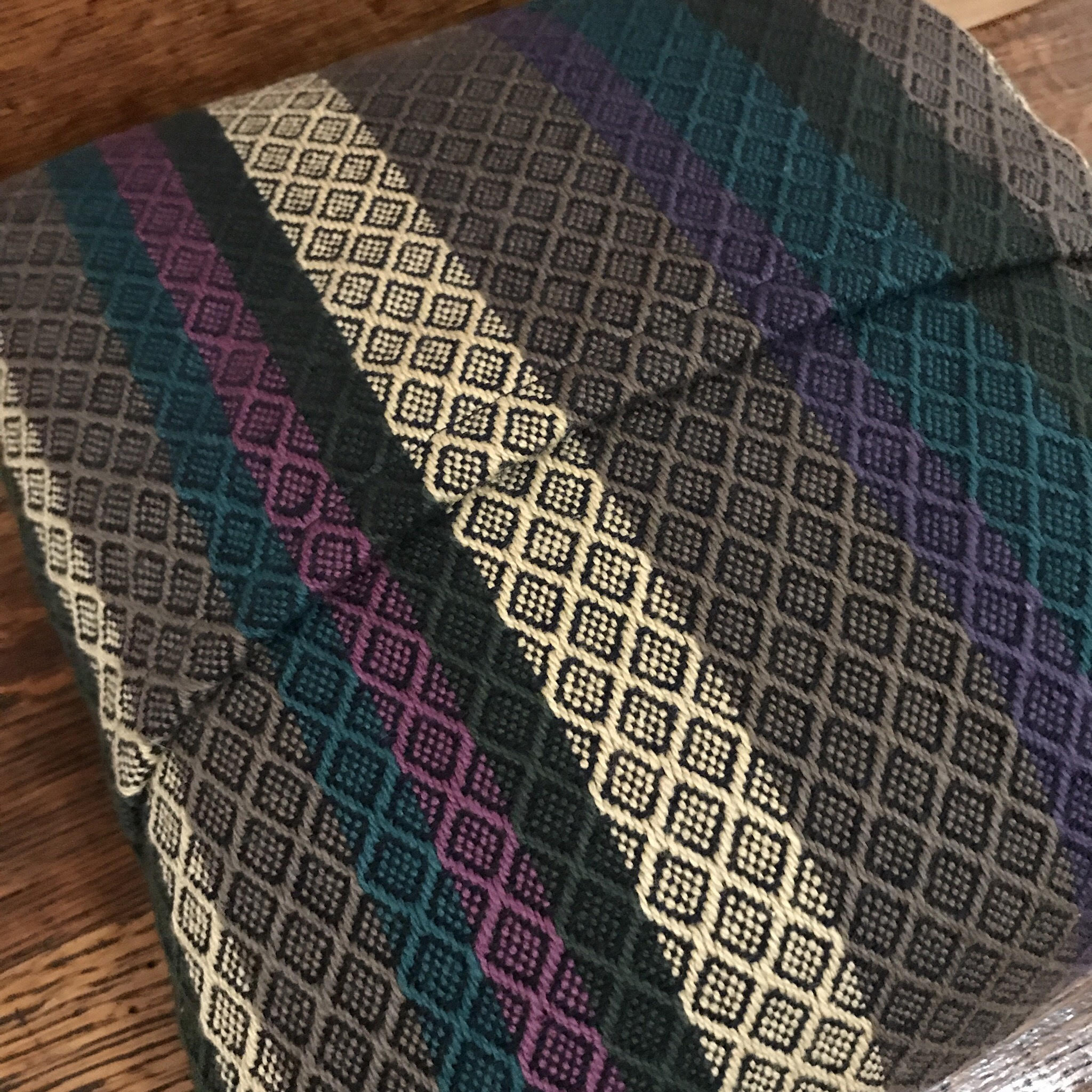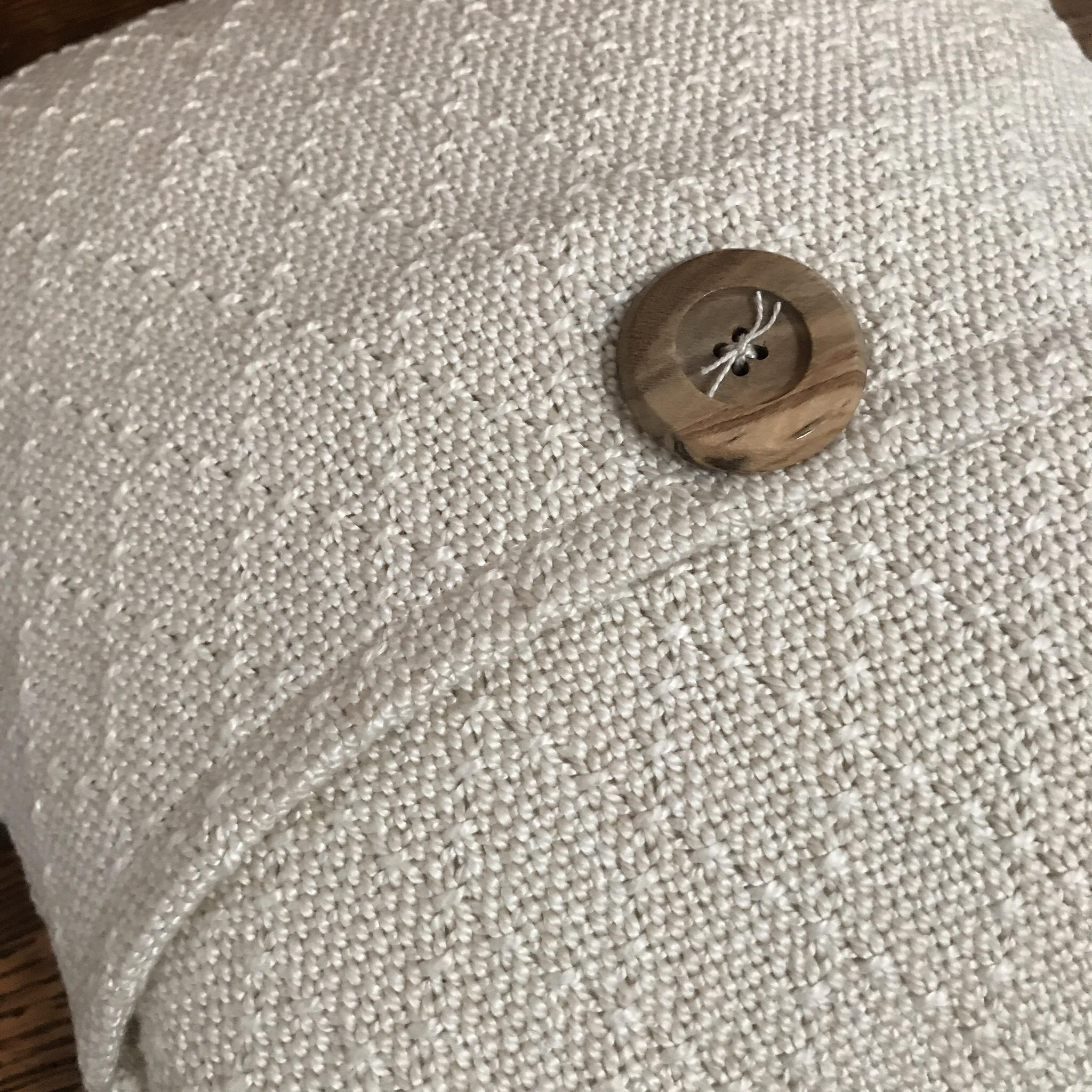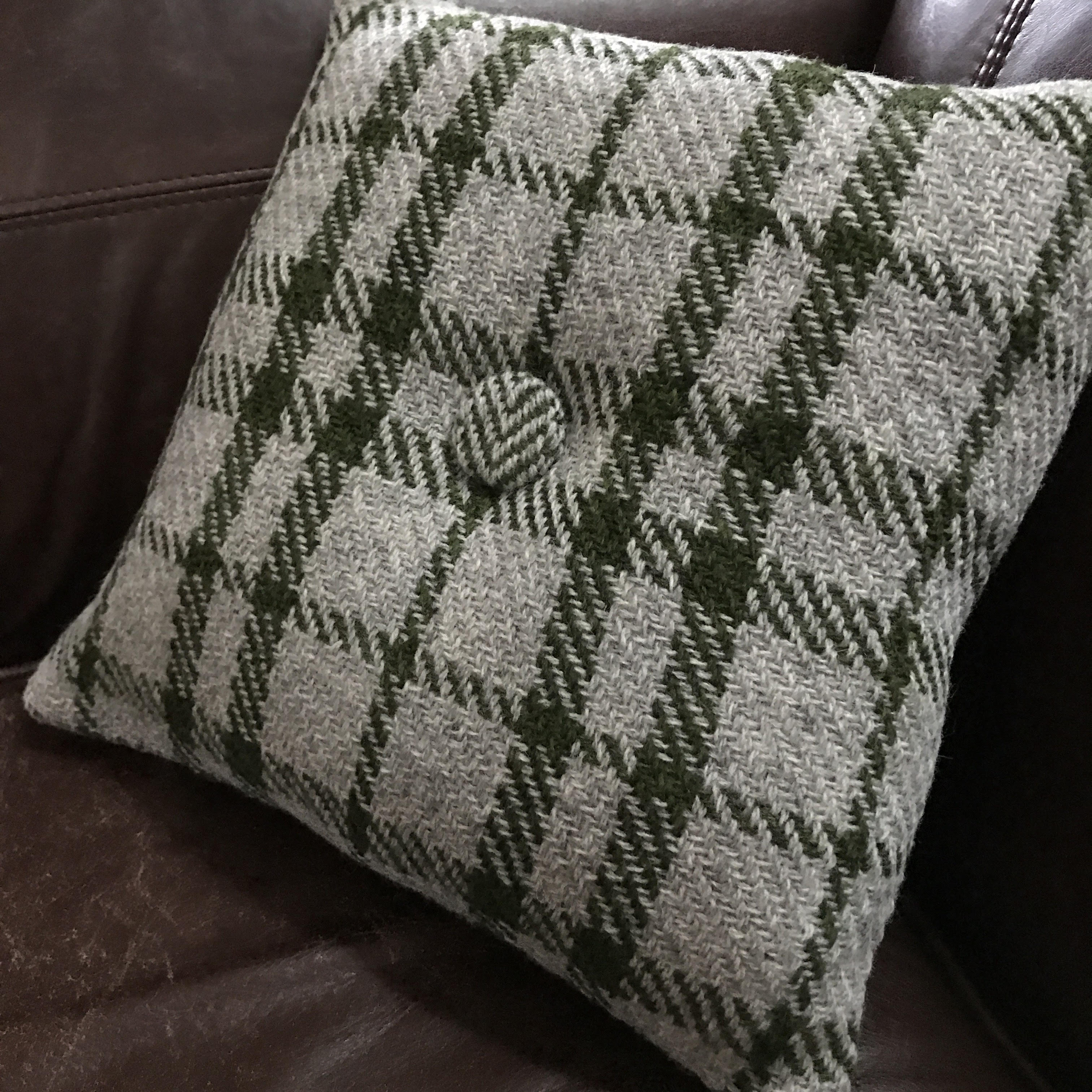
I am thinking about adding another dimension to my “handwoven home” offerings at summer fairs this year and have been tinkering with cushion cover designs. I’ve sewn a bit with my handwoven fabrics, and as my fellow handweaver friends know, it is most certainly NOT like working with commercially made cloth.
However, with some trial and error and an appreciation for the peculiarities of handwoven fabric, one can proceed with confidence and a modicum of caution.
I take a few steps with all of my handwoven fabrics prior to sewing:
- Pre-wash fabrics. This helps the threads of any handwoven fabrics to bloom and to come together. Plus, it helps to remove any residual dyes in the yarns and to stave off future shrinkage.
- Use a rotary cutter and cutting mat, where possible, to cut handwoven fabrics. I just find that the cut edges are a bit cleaner.
- Finish raw edges of the fabrics sooner rather than later. Handwoven fabric is susceptible to fraying. It is looser than commercially made cloth. I do not own a serger. If I did have one, I would serge the raw edges. Since I do not, I use a combination of machine straight stitching and zigzag stitches 1/4″ from the raw edge.
- Use a new (or new-ish) needle in your sewing machine. A sharp needle can make all of the difference. This is one of those cardinal rules that I learned from Nancy Zieman’s wonderful PBS television program, “Sewing with Nancy,” and is also noted in her books. Thank you, Nancy!
- Bias tape is your friend. In some cases, a folded over hem will be too thick. I’ve found this to be the case with overshot fabrics and some wools. A hem finished with single-fold bias tape reduces bulk.
Here are a few photos of some of my recent creations. The tartan wool pillow will be heading to the Horatio Colony Museum, Keene, New Hampshire for an exhibit beginning in May! For more info, please check out the “Fine Craft Shows / Exhibit” page.



The sewing was a fun diversion. But the loom beckons! I am working on some new diamond twill kitchen towels. Bookmarks to follows.
Inquiring minds want to know: do you sew with your handwovens? If so, feel free to offer any pearls of wisdom here!
Be well,
Kate K.

Kate, your pillows are wonderful! Your right sewing handwovens is challenging, those seam finishes. “Fray Check” by Dritz can be a help, but can be expensive to use extensively.
LikeLike
Thank you, Barbara! Yes, I’ve found that Fray check can be a bit expensive, too. I have used it on smaller items, like Christmas ornaments.
LikeLike
The pillows are gorgeous! I think if I were going to do a lot of sewing with my weaving, I’d invest in a serger. Have you thought of using some sort of fusible web to give structure and limit fraying?
LikeLike
Thanks very much! I’d love a serger someday! Maybe after our two kids are done with college! I have tried some fusible web products and they work well on fabrics that seem to be made with finer threads and have a smooth, untextured weave. I’ve had limited success getting fusible web to adhere to things like overshot, where I use either a somewhat heavy wool or a 3/2 mercerized cotton for the pattern weft. It is fun to experiment, thought, right? Happy weaving! 🙂
LikeLike